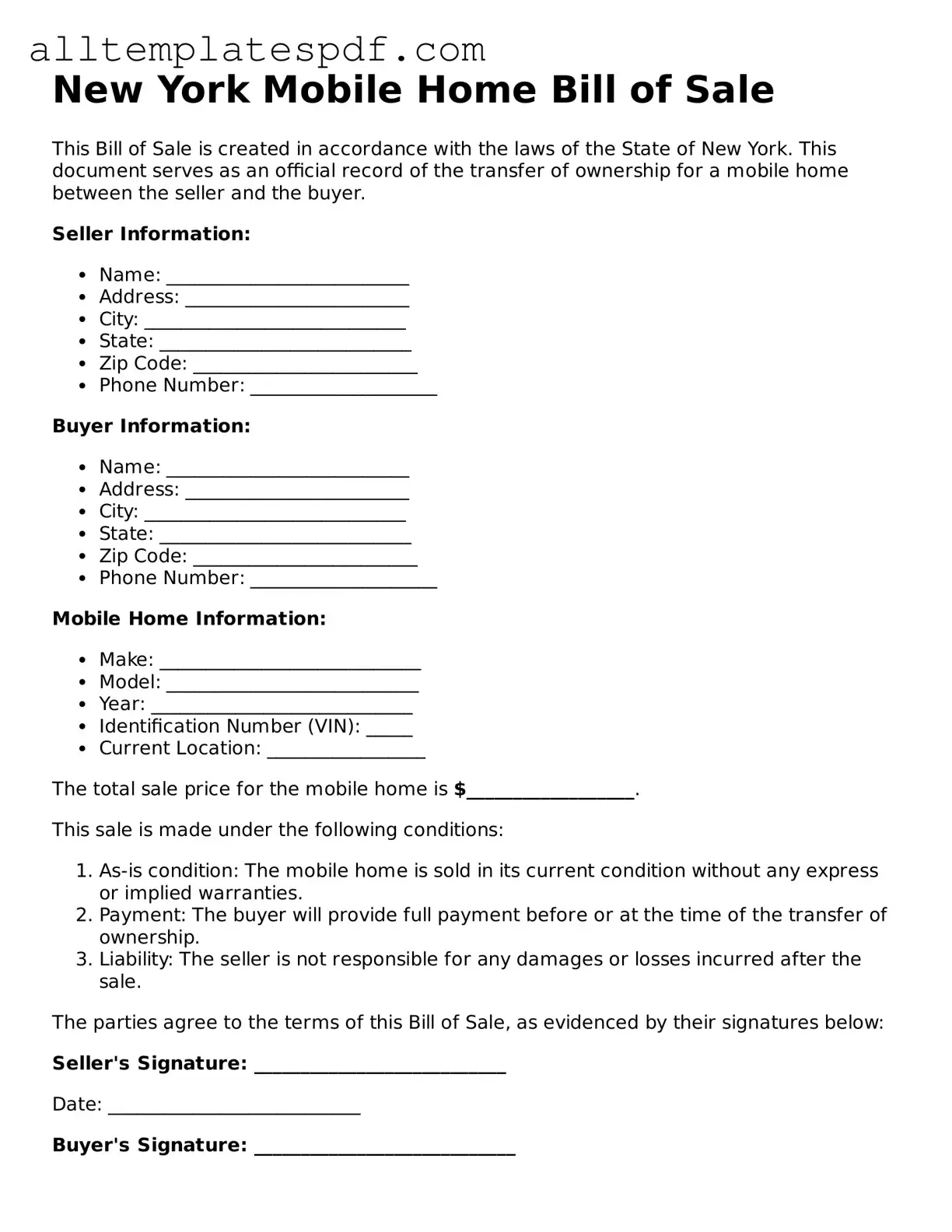Filling out the New York Mobile Home Bill of Sale form can be straightforward, but many individuals make common mistakes that can lead to issues down the line. One frequent error is neglecting to include all required information. Buyers and sellers must ensure that all fields are completed, including the names, addresses, and signatures of both parties. Omitting even one detail can render the document incomplete.
Another mistake often made is failing to accurately describe the mobile home. It is crucial to provide the correct make, model, year, and Vehicle Identification Number (VIN). Inaccurate descriptions can cause confusion and disputes later, especially if the mobile home is sold multiple times.
Many people also overlook the importance of the date on the form. Not dating the document can create ambiguity regarding when the sale took place. This can lead to complications, particularly if there are any disputes about ownership or responsibilities that arise after the sale.
In addition, some individuals forget to include the purchase price. This detail is essential for both parties, as it establishes the terms of the sale. Leaving this section blank can lead to misunderstandings about what was agreed upon.
Another common oversight is not having the form notarized when required. While notarization may not be necessary for every transaction, certain situations call for it. Failing to have the document notarized can weaken its legal standing and complicate future transactions.
People also sometimes fail to provide copies of the completed form to both parties. After signing, each party should retain a copy for their records. Without this, proving ownership or the terms of the sale may become problematic later.
Lastly, individuals may not check for any state-specific requirements that could apply to their situation. Laws and regulations can vary, and being unaware of these can lead to mistakes. Researching state requirements ensures that the sale is conducted properly and legally.
